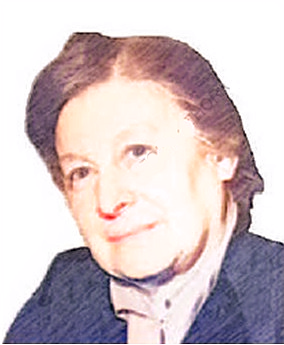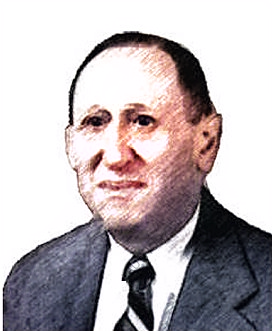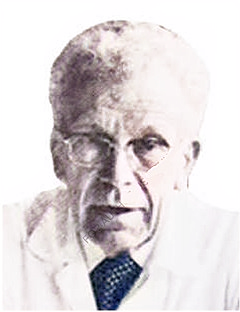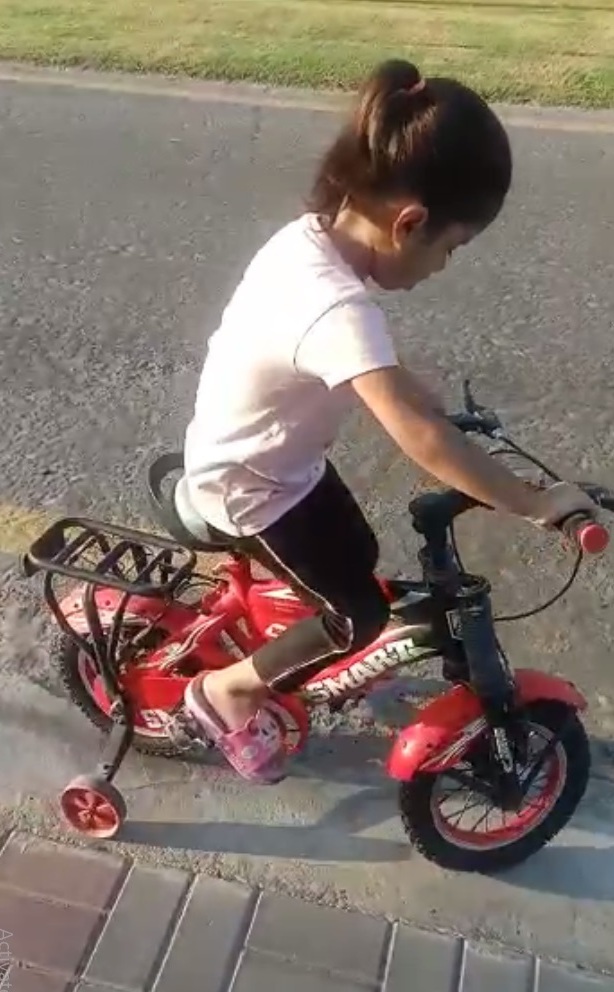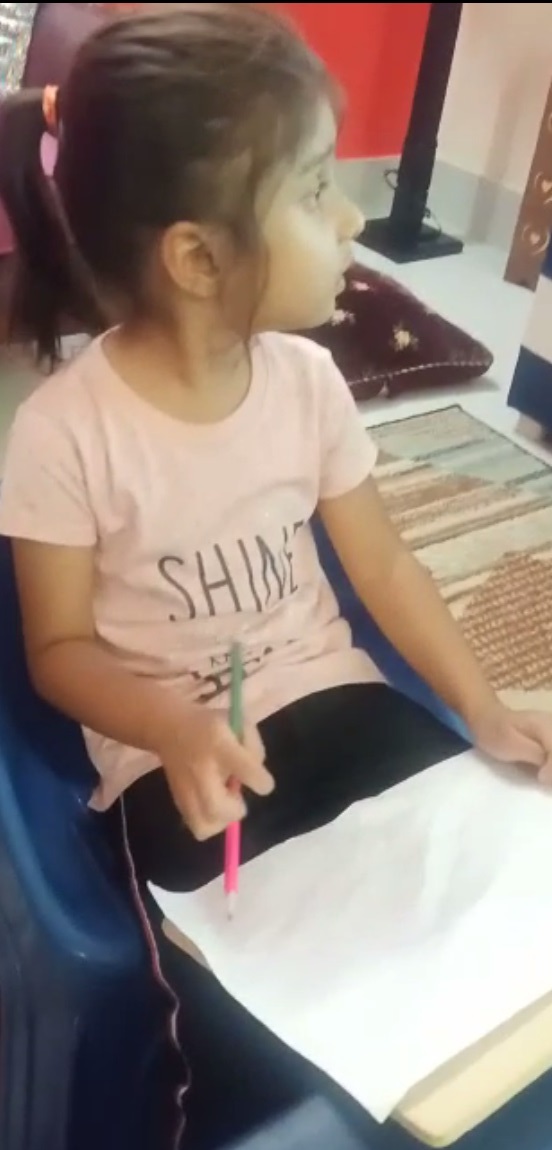Research Article | DOI: https://doi.org/10.58489/2836-2217/007
A girl from Pakistan with atypical autism: Expert opinion and a therapeutic recommendation
- Aamir Jalal Al-Mosawi 1
Advisor and expert trainer, Baghdad Medical City and the National Training and Development Center, Iraqi Ministry of Health, Baghdad, Iraq.
*Corresponding Author: Aamir Jalal Al-Mosawi
Citation: Aamir Jalal Al-Mosawi, (2022). A girl from Pakistan with atypical autism: Expert opinion and a therapeutic recommendation. Journal of Clinical Case Reports and Trails. 1(3).DOI: 10.58489/2836-2217/007
Copyright: © 2022 Aamir Jalal Al-Mosawi, this is an open access article distributed under the Creative Commons Attribution License, which permits unrestricted use, distribution, and reproduction in any medium, provided the original work is properly cited.
Received: 10 November 2022 | Accepted: 30 November 2022 | Published: 30 December 2022
Keywords: Atypical autism, mental retardation, expert opinion.
Abstract
Background: Autism disorders which are also known pervasive developmental disorders as are very complex and heterogeneous group of chronic disorders that marked by early impairment in socialization, communication, and behavior. Atypical autism associated with severe mental retardation is more likely to be associated with significant hyperactivity and behavioral abnormalities, and thus this association intensifies the therapeutic challenge of autism disorders.
Patients and methods: The case of a girl with atypical autism disorder associated with cognitive impairment is described, and expert opinion is presented.
Results: Early during October, 2022, the mother of 4 years and 10 months girl consulted us about the possible therapies for her girl who had the two major diagnostic features of autism (Poor response to own name and very poor eye contact. The girl was not interacting with anyone, and her speech was not developed. She also had repetitive movements mostly in the form of moving back and forth walk and some tapping of fingers with each other. Her motor development was acceptable, but she had poor understanding of commands and poor adaptive behaviors. The girl in this paper received the diagnosis of atypical autism with mental retardation, and was initially treated based on our extensive published experiences with treatment of autism disorders associated with cognitive impairment.
Conclusion: The current expert opinion suggests treatment of children with atypical autism associated with mental retardation represents a therapeutic challenge and demands the judicious uses of several therapies including intramuscular cerebrolysin, piracetam, neuroleptics, The addition of baclofen has been suggested in the treatment of atypical associated with marked hyperactivity.
Introduction
Autism disorders which are also known pervasive developmental disorders as are very complex and heterogeneous group of chronic disorders that marked by early impairment in socialization, communication, and behavior. Autism disorders were first recognized by Grunya Efimovna Sukhareva (Figure-1A), a Soviet pediatric psychiatrist in 1925, and she called these disorders autistic psychopathy.
The characteristic and diagnostic manifestations of autism disorders result from impairments in social interaction and communication. The impaired social interaction causes the two major diagnostic features of autism which are the lack of eye contact, and the lack of appropriate responsiveness to own name. Difficulties in using and understanding language are an important feature of autism disorders. Repetitive body movements or behavior patterns including hand flapping, foot tapping, and spinning are commonly associated with autism disorders.
The Autistic disorder which is called classical autism was first described by Leo Kanner (Figure-1B) in 1943. The diagnostic feature of this type is normal or high intelligence.
Children with Autism disorder who have subnormal intelligence, but without significant mental retardation are considered to have typical autism. The absence of significant mental retardation in such children is suggested by having acceptable adaptive behaviors including eating with spoon, bowel control and going to bathroom. In children with typical autism disorder, the serious lack of communication skills per se is expected to prevent or delay the acquisition of developmental mile stones.
Asperger syndrome was first described by Grunya Efimovna Sukhareva, and later by Hans Asperger (Figure-1C) in 1944 [1-8].
Patients and methods
The case of a girl with atypical autism disorder associated with cognitive impairment is described, and expert opinion is presented.
Results
Early during October, 2022, the mother of a 4-year and 10 months girl consulted us about the possible therapies for her girl, who had the two major diagnostic features of autism (Poor response to own name and very poor eye contact).
The mother described her daughter as not interacting with anyone and was living in her own world. Most of the time, the girl was not responding to name or turning toward who is saying her and had very poor eye contact (Figure-2A).
Her speech was not developed and she was not saying any words, but she was very rarely repeating words said by parents.
She also had repetitive movements mostly in the form of moving back and forth and some tapping of fingers with each other.
Her motor development was acceptable as shown by her ability to ride a bicycle (Figure- 2B). However, she had poor understanding of commands and poor adaptive behaviors as it was not much possible to train her for toilet and feeding with spoon. She could only eat banana and apple on her own and was unable to unwrap biscuits or candies
She could not copy a line or a circle, but has recently started holding a pencil but without looking towards the drawing paper (Figure-2C).
In addition, she generally lacks the understanding or identification of danger.
Brain MRI, EEG and hearing test were are all normal.
The girl in this paper received the diagnosis of atypical autism with mental retardation, and was initially treated based on our extensive published experiences with treatment of autism disorders and cognitive impairment [9-17].
The initial 2-month recommended therapies included courses of intramuscular cerebrolysin, oral piracetam, and oral risperidone:
1-Intramuscular cerebrolysin: 3 ml given every third day during the day, preferably in the morning (20 doses over two months).
2-Oral piracetam 800 mg given in the morning daily before breakfast for two months.
3-Oral risperidone 0.5 mg once at night and can be increased to 1 mg if hyperactivity persists.
Discussion
Atypical autism associated with mental retardation is more likely to be associated with significant hyperactivity and behavioral abnormalities, and thus this association intensifies the therapeutic challenge of autism disorders [1-8].
This girl in this paper was initially treated based on our extensive published experiences with treatment of autism disorders associated with mental retardation [9-17]. Treatment included intramuscular cerebrolysin, piracetam, and risperidone, an atypical neuroleptic.
Cerebrolysin, a safe parenteral mixture of aminoacids which has been used with a benefit in a variety of childhood neuropsychiatric disorders, is the only medical therapy that is known to be associated with significant improvement and even cure of the major autistic features (Poor response to name and poor eye contact which indicate impaired communication) [9-15].
Piracetam beneficial effects on impaired cerebral functions include improving neuronal and cognitive functions, increasing cerebral blood flow and oxygen consumption, improving neurotransmitters function and brain neurotransmission. Piracetam is not associated with important side effect nor has acute toxicity at the therapeutic doses. Piracetam has been used with important benefits in the treatment of cerebral palsy and other childhood neuro-psychiatric disorders [18, 19].
Parenteral piracetam has been used safely and with a benefit in a variety of childhood neuropsychiatric disorders, and it is one of the most important medications that have been used with benefit in mental and developmental retardation of various types and etiologies [17, 20-25].
McCracken et al (2002) reported a placebo controlled, double-blind study of the use of risperidone in the treatment of 101 children (82 boys and 19 girls) aged 5 to 17 years, having autism disorder associated with severe tantrums, aggression, or self-injurious behavior. The study found that risperidone was beneficial for the treatment of tantrums, aggression, or self-injurious behavior in children, and was well tolerated [26].
The available research evidence suggests that baclofen, a selective agonist for GABAB receptors can contribute to the impaired function of the GABAergic system in autism disorders and its use with risperidone has been suggested [27].
Conclusion
The current expert opinion suggests treatment of children with atypical autism associated with mental retardation represents a therapeutic challenge and demands the judicious uses of several therapies including intramuscular cerebrolysin, piracetam, neuroleptics, The addition of baclofen has been suggested in the treatment of atypical associated with marked hyperactivity.
Acknowledgement
Some if the figures in this paper were included in previous author's publications, but the author has their copyrights.
The author would like to express his gratitude for the parents who willingly accepted publishing the photos of their child.
Conflict of interest
None.
References
- Al-Mosawi AJ. (2018), Asperger syndrome and regressive autism.1st ed., Saarbrücken; LAP Lambert Academic Publishing: (ISBN: 978-613-9-82643-8).
View at Publisher | View at Google Scholar - Al-Mosawi AJ. (2018), A new therapeutic approach for pervasive developmental disorders. 1st ed., Saarbrücken; LAP Lambert Academic Publishing: (ISBN: 978-3-659-86602-9).
View at Publisher | View at Google Scholar - Al-Mosawi AJ. (2018), Pediatric psychiatry: An accredited training course. 1st ed., Saarbrücken; LAP Lambert Academic Publishing: (ISBN: 978-613-9-86510-9
View at Publisher | View at Google Scholar - Al-Mosawi AJ. (2019), The pattern of pervasive developmental disorders in Iraqi children.1st ed., Saarbrücken; LAP Lambert Academic Publishing: (ISBN: 978-3-330-05029-7).
View at Publisher | View at Google Scholar - Al-Mosawi AJ. (2021), autism disorders in Iraq. Scholars' Press: (ISBN-13: 978-613-8-94973-2, ISBN-10: 6138949730).
View at Publisher | View at Google Scholar - Al-Mosawi AJ. (2020), autism disorders: Cure is possible. 1st ed., Saarbrücken; LAP Lambert Academic Publishing, Saarbrücken; Germany, (ISBN-13:978-620-2-66617-6, ISBN-10: 620266617X).
View at Publisher | View at Google Scholar - Al-Mosawi AJ. (2021), An introduction to child psychiatry: A training course. Scholars’ Press: (ISBN-13: 978-613-8-94954-1, ISBN-10: 6138949544).
View at Publisher | View at Google Scholar - Al-Mosawi AJ. (2020), Case Studies in pediatric psychiatry: An approach to deep learning and experience acquisition. SunKrist Journal of Psychiatry and Mental Health 2020 August 21; 1(1): 1-21[1004]. Doi: 10.46940/sjpmh. 01.1004
View at Publisher | View at Google Scholar - Al-Mosawi AJ. (2019), The use of cerebrolysin and citicoline in autism and Asperger syndrome. Journal of Bio Innovation (e-ISSN 2277-8330) 2019 January; 8(1): 99-108.
View at Publisher | View at Google Scholar - Al-Mosawi AJ. (2019), Pervasive developmental disorders in Iraqi children. Journal of Psychiatry Research Reviews & Reports 2019 Sep 11; 1(1): 1-8. Doi: 10.5281/zenodo. 4007395
View at Publisher | View at Google Scholar - Al-Mosawi AJ. (2020), Clinical uses of Cerebrolysin in Pediatric Neuropsychiatry. Science World Journal of Pharmaceutical Sciences 2020 February 5; 1(1): 1-4. Doi: 10.5281/ zenodo.3878485
View at Publisher | View at Google Scholar - Al-Mosawi AJ. (2020), Our experience with childhood pervasive developmental disorders (Autism and Asperger Syndrome): Cure is Possible. EC Clinical and Medical Case Reports March 03, 2020; 3(4): 01-08. Doi: 10.5281/zenodo.3892198
View at Publisher | View at Google Scholar - Al-Mosawi AJ. Cure of autistic disorders: Mission impossible is possible in an illustrated pioneering experience. Archives of Health Science (ISSN 2641-7456); 4(1):1-26. 4(1):1-26. Doi: 10.31829/2641-7456/ahs2020-4 (1)-113
View at Publisher | View at Google Scholar - Al-Mosawi AJ. (2021), Atypical Autism Associated with Elevated Gonadotrophin and Precious Puberty: A Very Rare Association or a New Clinical Syndrome? Biomedical Journal of Scientific & Technical Research (ISSN: 2574 -1241) 2021 Jan, 21; 33(2): 256 86-25689. Doi: 10.26717/BJSTR.2021.33.005377
View at Publisher | View at Google Scholar - Al-Mosawi AJ. (2021), A novel therapeutic approach for treating Rett syndrome. EC Clinical and medical case reports 2021 March 01; 4(3): 1-9. Doi: 10.5281/zenodo.45686 52
View at Publisher | View at Google Scholar - Al-Mosawi AJ. (2019), Pervasive developmental disorders in Iraqi children. Journal of Psychiatry Research Reviews & Reports 2019 Sep 11; 1(1): 1-8. Doi: 10.5281/zenodo. 4007395
View at Publisher | View at Google Scholar - Al-Mosawi AJ. (2019), The etiology of mental retardation in Iraqi children. SunKrist Journal of Neonatology and Pediatrics.2019 June 21; 1(1):1-9. Article No: sjnp-v1-1001. Doi: 10. 46940/sjnp.01.1001
View at Publisher | View at Google Scholar - Al-Mosawi AJ. (2020), Recent uses of piracetam in pediatric neurology. SunKrist Neurology, Neurosurgery and Stroke Journal 2020; 2 (1): 1002 (1-5). Doi:10.46940/ snnsj.02.1002
View at Publisher | View at Google Scholar - Al-Mosawi AJ. (2020), Goldberg Shprintzen Syndrome: A Novel Therapeutic Approach. EC clinical and medical case reports 2020 October 31; 3 (11): 115-123. Doi: 10.5281/ zenodo.4289104
View at Publisher | View at Google Scholar - Al-Mosawi AJ. (2020), The use of piracetam and cerebrolysin in the treatment of agenesis of corpus callosum with colpocephaly. EC clinical and medical case reports Jan 2020; 3(1): 01-05. Doi: 10.5281/ zenodo.3892231
View at Publisher | View at Google Scholar - Al-Mosawi AJ. (2020), A Unique experience with mental and developmental retardation: Innovative Medical therapies for idiopathic mental retardation. EC Clinical and Medical Case Reports April 13, 2020; 3(5): 42-54. Doi: 10.5281/zenodo.3892214 22.
View at Publisher | View at Google Scholar - Al-Mosawi AJ. (2020), Recent Uses of Piracetam in Pediatric Neurology. SunKrist Neurology, Neurosurgery and Stroke Journal May 2020; 2 (1): 1002 (1-5). Doi:10.46940/snnsj.02. 1002
View at Publisher | View at Google Scholar - Al-Mosawi AJ. (2020), The treatment of a child with birth asphyxia induced brain atrophy, adrenal hemorrhage, and bi-lateral hyperoxaluric nephrocalcinosis: A challenging case and a unique experience. Open Access Journal of Biogeneric Science and Research (ISSN: 2692-1081) June 29, 2020; 2(2): 1-6. Doi: 10.5281/zenodo.5069460
View at Publisher | View at Google Scholar - Al-Mosawi AJ. (2020), Treatment of a boy with idiopathic mental retardation: From uneducable to educable. SunKrist Clinical and Medical Case Reports Journal 2020 August 17; 2 (1):1-6. Scmcrj-v2-1007.Doi: 10.5281/zenodo.3992208
View at Publisher | View at Google Scholar - McCracken JT, McGough J, Shah B, Cronin P, Hong D, Aman MG, et al. (2002), Risperidone in children with autism and serious behavioral problems. N Engl J Med. 2002 Aug 1; 347 (5):314-21. Doi: 10.1056/NEJMoa013171
View at Publisher | View at Google Scholar - Mahdavinasab SM, Saghazadeh A, Motamed-Gorji N, Vaseghi S, Mohammadi MR, Alichani R, Akhondzadeh S. (2019), Baclofen as an adjuvant therapy for autism: a randomized, double-blind, placebo-controlled trial. Eur Child Adolesc Psychiatry 2019 Dec; 28 (12): 1619-1628. Doi: 10.1007/s00787-019-01333-5
View at Publisher | View at Google Scholar
